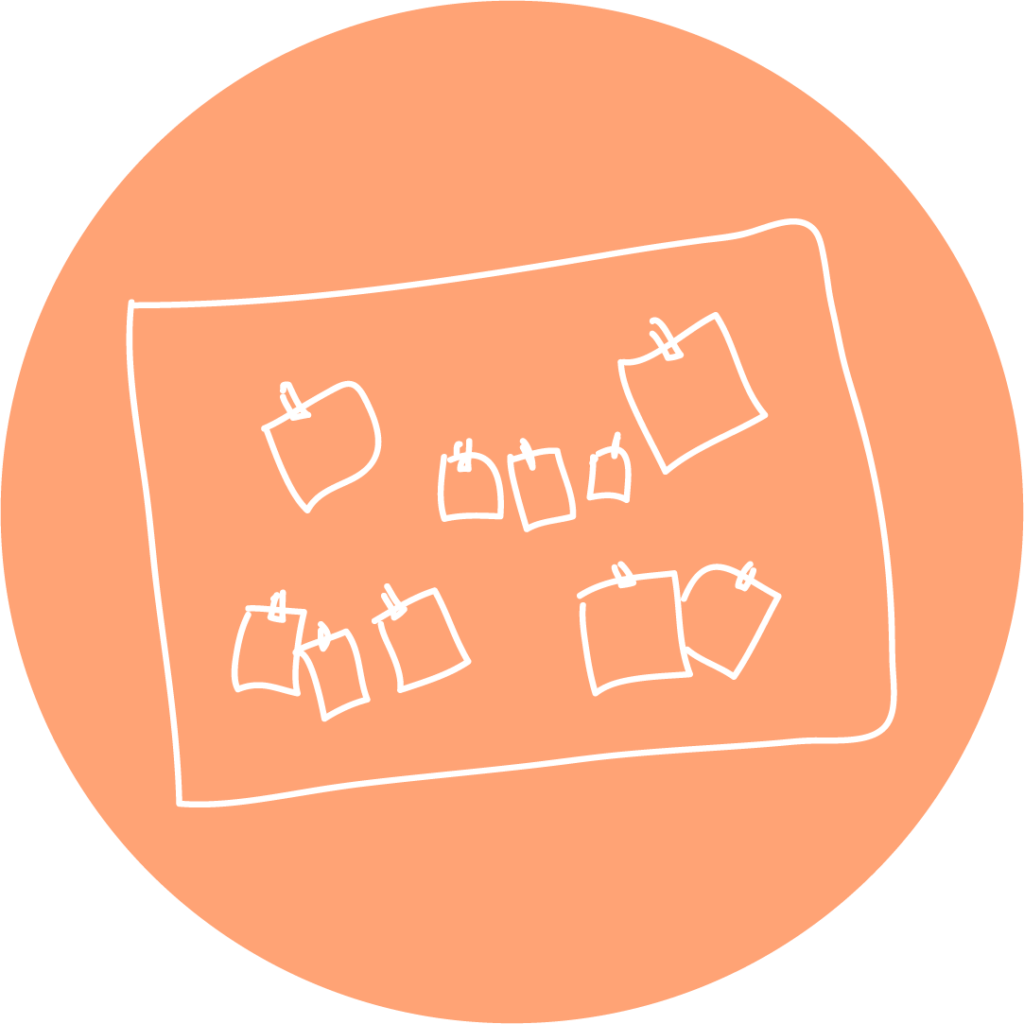Home / COLLAGE
Recommended age: 5-18 years
Location: Indoors
Time required: 1-2 hours in one session
Materials/Tools: Large stiff sheets of paper or cardboard, inspirational images and staple or glue.
Purpose: To recognise the aesthetic, cultural and social preferences of the participants
Where in the process: Vision and concept

Working with collages is great because it is creative and fun, linguistically inclusive and makes cultural backpacks and references visible. It is relatively straightforward, but we would like to share some tips.
Use large sheets of paper and divide these sheets into different fields by drawing lines and putting different headings on the different fields: for example, “colour and shape”, “function”, “seating”, “outside”, “inside” – simple headings that make sense for your project. Dividing the sheets into fields makes it easier for us adults to understand the children’s ideas and for them to develop them.
Prepare one or more large sheets of paper/cardboard for the children to put the pictures on. It is best to mount the sheet on the wall at a height that everyone can reach. Print out pictures from the internet and collect newspaper cuttings etc. Hand out markers so that children can write or draw on their collages. Divide the children into groups if it is relevant to the project, for example if they are going to continue working in smaller groups.
Collage based on chosen words:
Choose words that can be fruitful for the process and that they make their collages around, for example “my dream playground”. Or let the children name their own collages.
Moodboard:
Are you at a later stage of the design process, where the concept already has been decided and you are now turning your focus towards choosing colours and shapes? Make a moodboard with the children, just as above, but with a focus on emotion and the visual.
Wall of ideas- for younger children:
Select images that can be relevant to your project and at the same time offer a width. Divide them into categories such as colours, patterns, play signals, seating etc. depending on the context. Ask the children to choose x number from each category and put them on a large piece of paper. Ask the children why they chose those pictures and write it on the wall of ideas. The result can serve as a guide in the process towards figuring out the children’s preferences and agreeing on a common direction in the further process.
It’s great if children have time to present their collages at the end of the session! One tip is to use visual applause to give confirmation, i.e. children shake hands to confirm ideas they like. The hand method is completely silent, which does not interrupt the presenter, but makes the audience active so that they have an easier time focusing and provides more information around which ideas the children like.
Be aware that the choice of images sets a direction from the start and can be limiting or biassed. Choose a wide range of images, including those that you do not spontaneously think children will choose.
Can you use this method on its own? YES! The method can be used independently or as part of a longer design process.
Have a computer and printer handy when carrying out the method so you can easily print out any specific images the children want.
We use cookies to give you the best experience on our website. If you continue to use this website, you agree to the use of cookies.
Vi använder cookies för att ge dig den bästa upplevelsen på vår hemsida. Om du fortsätter att använda den här webbplatsen godkänner du detta.